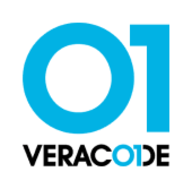

Veracode and Synopsys Software Risk Manager are competing in application security. Veracode leads with pricing and support satisfaction, while Synopsys stands out with a stronger feature set.
Features: Veracode offers extensive scanning capabilities, seamless integration with development tools, and continuous security monitoring. Synopsys Software Risk Manager provides depth in risk analysis, robust compliance features, and detailed vulnerability insights. Veracode focuses on ease of integration and immediate use; Synopsys emphasizes comprehensive analysis and reporting capabilities.
Ease of Deployment and Customer Service: Veracode features straightforward cloud-based deployment, minimizing initial setup and offering strong support services. Synopsys Software Risk Manager provides an on-premises option for greater flexibility, appealing to those requiring more customizable configurations and hands-on support.
Pricing and ROI: Veracode has a lower setup cost, offering quick ROI through efficient integration and application security support. Synopsys Software Risk Manager involves a higher initial investment but provides ROI through comprehensive risk management solutions, balancing quick-to-value versus long-term investment in security robustness.


Software Risk Manager is an application security posture management (ASPM) solution that enables security and development teams to manage their application security programs at enterprise scale. By unifying policy, test orchestration, correlation, prioritization, and built-in static application security testing (SAST) and software composition analysis (SCA) engines, organizations can streamline their security activities across the enterprise.
Veracode is a leading provider of application security solutions, offering tools to identify, mitigate, and prevent vulnerabilities across the software development lifecycle. Its cloud-based platform integrates security into DevOps workflows, helping organizations ensure that their code remains secure and compliant with industry standards.
Veracode supports multiple application security testing types, including static analysis (SAST), dynamic analysis (DAST), software composition analysis (SCA), and manual penetration testing. These tools are designed to help developers detect vulnerabilities early in development while maintaining speed in deployment. Veracode also emphasizes scalability, offering features for enterprises that manage a large number of applications across different teams. Its robust reporting and analytics capabilities allow organizations to continuously monitor their security posture and track progress toward remediation.
What are the key features of Veracode?
What benefits should users consider in Veracode reviews?
Veracode is widely adopted in industries like finance, healthcare, and government, where compliance and security are critical. It helps these organizations maintain strict security standards while enabling rapid development through its integration with Agile and DevOps methodologies.
Veracode helps businesses secure their applications efficiently, ensuring they can deliver safe and compliant software at scale.
We monitor all Static Application Security Testing (SAST) reviews to prevent fraudulent reviews and keep review quality high. We do not post reviews by company employees or direct competitors. We validate each review for authenticity via cross-reference with LinkedIn, and personal follow-up with the reviewer when necessary.